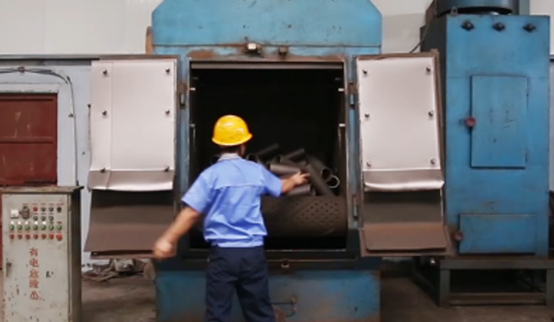 Afrikaans
Afrikaans  Albanian
Albanian  Amharic
Amharic  Arabic
Arabic  Armenian
Armenian  Azerbaijani
Azerbaijani  Basque
Basque  Belarusian
Belarusian  Bengali
Bengali  Bosnian
Bosnian  Bulgarian
Bulgarian  Catalan
Catalan  Cebuano
Cebuano  Corsican
Corsican  Croatian
Croatian  Czech
Czech  Danish
Danish  Dutch
Dutch  English
English  Esperanto
Esperanto  Estonian
Estonian  Finnish
Finnish  French
French  Frisian
Frisian  Galician
Galician  Georgian
Georgian  German
German  Greek
Greek  Gujarati
Gujarati  Haitian Creole
Haitian Creole  hausa
hausa  hawaiian
hawaiian  Hebrew
Hebrew  Hindi
Hindi  Miao
Miao  Hungarian
Hungarian  Icelandic
Icelandic  igbo
igbo  Indonesian
Indonesian  irish
irish  Italian
Italian  Japanese
Japanese  Javanese
Javanese  Kannada
Kannada  kazakh
kazakh  Khmer
Khmer  Rwandese
Rwandese  Korean
Korean  Kurdish
Kurdish  Kyrgyz
Kyrgyz  Lao
Lao  Latin
Latin  Latvian
Latvian  Lithuanian
Lithuanian  Luxembourgish
Luxembourgish  Macedonian
Macedonian  Malgashi
Malgashi  Malay
Malay  Malayalam
Malayalam  Maltese
Maltese  Maori
Maori  Marathi
Marathi  Mongolian
Mongolian  Myanmar
Myanmar  Nepali
Nepali  Norwegian
Norwegian  Norwegian
Norwegian  Occitan
Occitan  Pashto
Pashto  Persian
Persian  Polish
Polish  Portuguese
Portuguese  Punjabi
Punjabi  Romanian
Romanian  Russian
Russian  Samoan
Samoan  Scottish Gaelic
Scottish Gaelic  Serbian
Serbian  Sesotho
Sesotho  Shona
Shona  Sindhi
Sindhi  Sinhala
Sinhala  Slovak
Slovak  Slovenian
Slovenian  Somali
Somali  Spanish
Spanish  Sundanese
Sundanese  Swahili
Swahili  Swedish
Swedish  Tagalog
Tagalog  Tajik
Tajik  Tamil
Tamil  Tatar
Tatar  Telugu
Telugu  Thai
Thai  Turkish
Turkish  Turkmen
Turkmen  Ukrainian
Ukrainian  Urdu
Urdu  Uighur
Uighur  Uzbek
Uzbek  Vietnamese
Vietnamese  Welsh
Welsh  Bantu
Bantu  Yiddish
Yiddish  Yoruba
Yoruba  Zulu
Zulu Exploring Different Pulley Types Used in Belt Conveyor Systems
Types of Pulleys in Belt Conveyors
Belt conveyors are an integral part of various industries, providing an efficient means to transport materials across different stages of production. One of the key components that facilitate the operation of a belt conveyor is the pulley system. Pulleys not only provide a means to change the direction of the conveyor belt but also play crucial roles in tensioning and supporting the belt. There are several types of pulleys used in belt conveyors, each designed for specific functions and applications.
1. Drive Pulleys These pulleys are crucial in the operation of belt conveyors. The drive pulley is powered by a motor, and its rotation drives the belt movement. The design of the drive pulley significantly affects the conveyor's efficiency and performance. Drive pulleys can be further categorized into lagged and unlagged types. Lagged pulleys have a surface coating that provides increased friction and improves traction with the belt, while unlagged pulleys have a smooth surface.
2. Idler Pulleys Idler pulleys support the conveyor belt and maintain its proper alignment. They are typically found throughout the conveyor system and help reduce belt sagging. Idler pulleys can be fixed or adjustable. Fixed idlers are stationary, while adjustable idlers allow for changes in belt tension and alignment as needed.
types of pulleys in belt conveyor

3. Tail Pulleys Located at the end of the conveyor, tail pulleys are used to return the belt to its starting position. They play a pivotal role in belt tensioning and help maintain the overall structure of the conveyor system. Tail pulleys can also be fitted with a rubber lagging to enhance traction.
4. Snub Pulleys These are specialized pulleys installed to increase the wrap angle between the belt and the drive pulley. By increasing the contact area, snub pulleys enhance belt traction, thereby improving the efficiency of the drive system. They are particularly useful in situations where the belt must overcome high friction.
5. Take-Up Pulleys These pulleys help to adjust the tension of the conveyor belt and can accommodate variations in belt length due to wear or environmental conditions. Take-up pulleys are essential for maintaining optimal operating conditions and prolonging the life of the conveyor belt.
In conclusion, the various types of pulleys in belt conveyors—drive pulleys, idler pulleys, tail pulleys, snub pulleys, and take-up pulleys—collectively contribute to the efficient functioning of conveyor systems. Understanding the specific roles and applications of each pulley type helps engineers and operators optimize conveyor design and performance, leading to improved operational efficiency and potential cost savings in material handling processes. By selecting the appropriate pulleys based on the conveyor's requirements, industries can ensure reliable and continuous transport of materials.
-
Revolutionizing Conveyor Reliability with Advanced Rubber Lagging PulleysNewsJul.22,2025
-
Powering Precision and Durability with Expert Manufacturers of Conveyor ComponentsNewsJul.22,2025
-
Optimizing Conveyor Systems with Advanced Conveyor AccessoriesNewsJul.22,2025
-
Maximize Conveyor Efficiency with Quality Conveyor Idler PulleysNewsJul.22,2025
-
Future-Proof Your Conveyor System with High-Performance Polyurethane RollerNewsJul.22,2025
-
Driving Efficiency Forward with Quality Idlers and RollersNewsJul.22,2025





























